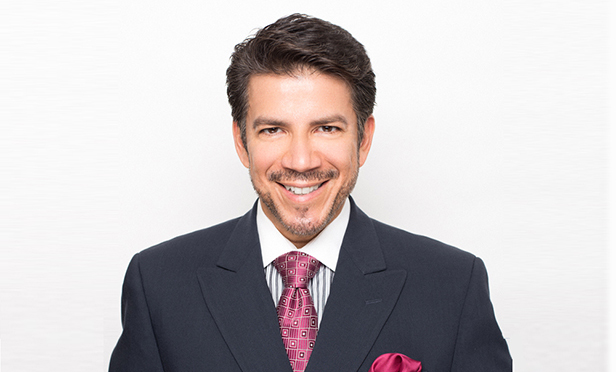NEW YORK CITY—As the most populous city in the US, New York has been seen as a magnet for talent and innovation, as well as one of the more desired locations for the increased interest in urban living. This has put a strain on housing, as the population in the city has reached the highest on record. Development is in demand—yet why is it also so hard? That’s the question for Roy R. Pachecano, an architect and developer who works with both the Pratt Institute and Columbia University’s Urban Design Labs. What answer does he find? Zoning.
He discusses these challenges zoning poses with James Nelson, principal and head of tri-state investment sales in Avison Young’s New York City office, and others in this guest column for this month’s Full Nelson.
The views expressed are the author’s own.
 Roy R. Pachecano
Roy R. Pachecano
In the short-film, “The Urban Developer,” we learn how zoning policies become the invisible hand of development—essentially affecting all of us. It chronicles the specialized curriculum I’ve developed over two decades on the subject of zoning and land use as taught in my Columbia University and Pratt Institute classes. “The Urban Developer” exposes a myriad of issues affecting the ability to bring space to the marketplace.
Taking a look at six influential professionals views on the urban development process and how technology is impacting delivery methods, I sat down with A. Eugene Kohn, FAIA/KPF Architects; James Nelson/Avison Young; Rob Whitlock, AIA/KPF Architects; Abby Hamlin/Hamlin Investments; Carol Willis/Columbia University; and Bruce Eichner/The Continuum Company LLC to expose the challenges of development in the city. This film touches on a handful of current issues affecting urban development.
Zoning, and its impact on the community, is prominently felt in New York City, where five-story walk-ups, medium, tall and super-tall structures are all subject to this regulation—only made visible by the activation of a selection of regulatory provisions that are fit, or ascribed, to a specific purpose or project. With this film, I attempt to manifest the numerous “hidden” elements impacting our built environment—including the emerging, invisible presence of big data and how it may track sentiment in urban spaces (for example, current research is underway at the Urban Design Lab at Columbia University, guided by director Richard Plunz).
The big question is, why is urban development so alluring? Why do we seek to build higher and higher even with increasing risks? A. Eugene Kohn, founder of KPF Architects, thinks that the answer lies in human nature: to “climb the higher mountain, build the tallest building, fly higher than anyone had ever flown before,” to do something no one has done before.
“Developers in New York City need to build vertically as we are so limited when it comes to raw land. In fact, in one study, we found that excluding parkland there is only 3% of the Manhattan geography that remains as undeveloped land,” says James Nelson. He added, “New York City is an incredibly dense city with only 309 square miles for its 8.4 million people, making it 30 times as dense as Dallas.“
The challenges of finding land in Manhattan often cause an existing building’s land to become more valuable than the building itself.
Developers embrace these situations, not because it’s easy to do but because they are challenging. In the challenge is a reward. And it’s justified to receive a return on investment that might be better than in Miami, for example, because of the scarcity. And it feels connected.
One of the main issues in urban settings is that of affordable housing. The trend seems to be that buildings are becoming bigger and better in a lot of ways, so what happens to housing? Abby Hamlin, president of Hamlin Venture LLC, believes the key is public dollars. “And I know that is a controversial subject and I know that those dollars are shrinking. The mayor of New York City has set a very clear focus for the creation of additional affordable housing units. And much of the way in which that will happen is preservation of rent stabilized units, rezoning and increasing density, plus subsidy,” she said.
Bruce Eichner, founder of The Continuum Company, LLC, believes the idea of large-scale affordable housing stems from the cost of the land and the availability of relatively inexpensive financing, and how to control construction costs. “If you combine these ideas, then you come up with large-scale affordable housing,” he said.
As the film continues, some ask why Americans seem to be destroying their cities. Perhaps we’re sending two signals, one that our buildings are disposable, and two that this impetus is what gives American cities their newness and how it reinvents itself without regard to its past, sending out a perpetual wave of new construction.
These two perceptions reinforce certain notions in American urban environments that have crossed over to mainstream cultural awareness. Looking to the past may help to reveal our future. Throughout history, people have consistently looked to greater heights. Before zoning regulations, height was typically restricted by the limits of building technology at the time.
Nelson referred to Hugh Kelly’s book 24 Hour Cities, which also pointed out that New York City’s borders are constrained by its rivers, heightening this effect. Cities like Los Angeles have spread out in a horizontal direction as opposed to vertically. Cities like Phoenix have natural limits to its expansion such as the water supply. This density is what drives value for its real estate.
As long as the trajectory of migration from rural to urban areas continues, so will the rise of new structures.
Roy R. Pachecano is an architect, developer, teacher, and author of over 50 professional articles related to land use and professional practice issues affecting real estate. His private practice, PorticoREI LLC, assist clients in understanding and repositioning their real estate assets from small to large-scale development. He also lectures at Pratt Institute and is affiliated with Columbia University’s Urban Design Lab as a research consultant. This short-film debuted at the 5th International Conference on Architecture and the Built Environment, May 23, 2018, in Venice, Italy.

















 Copyright © 2024 ALM Global, LLC. All Rights Reserved.
Copyright © 2024 ALM Global, LLC. All Rights Reserved.